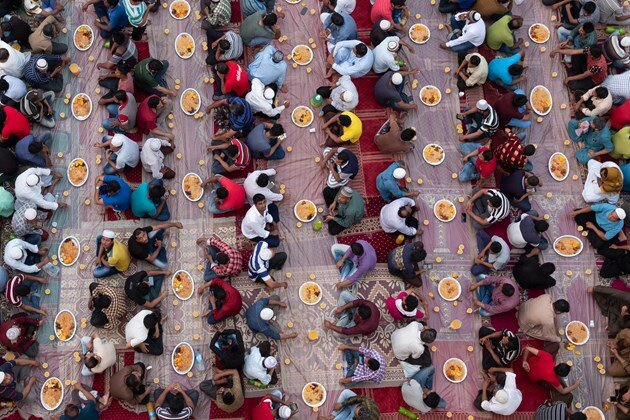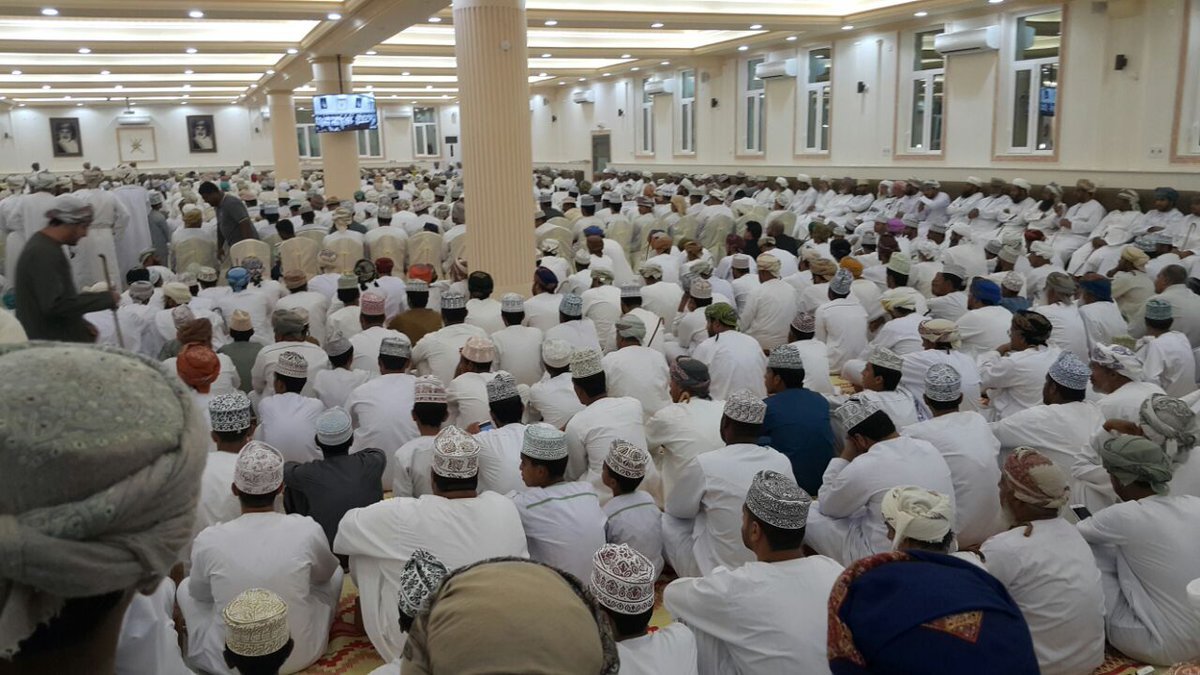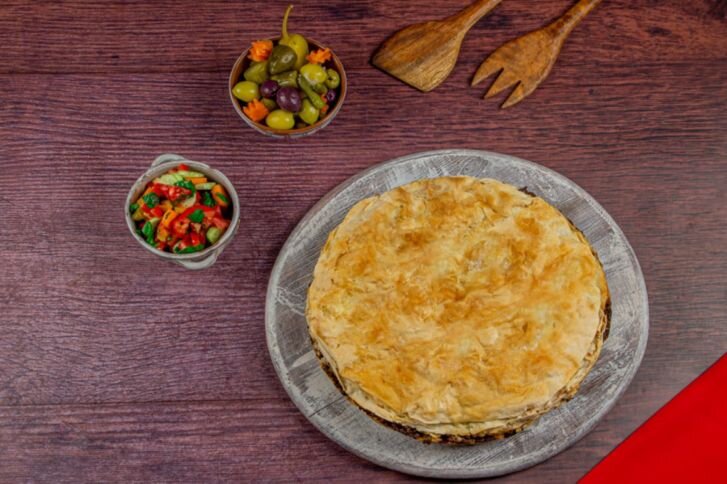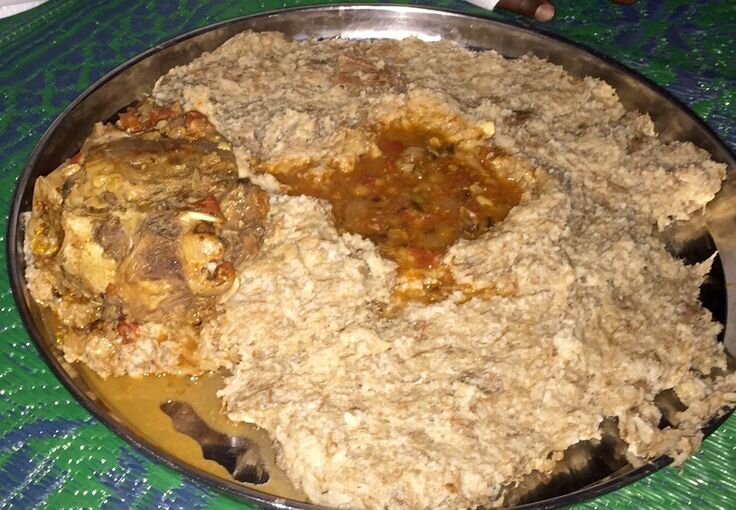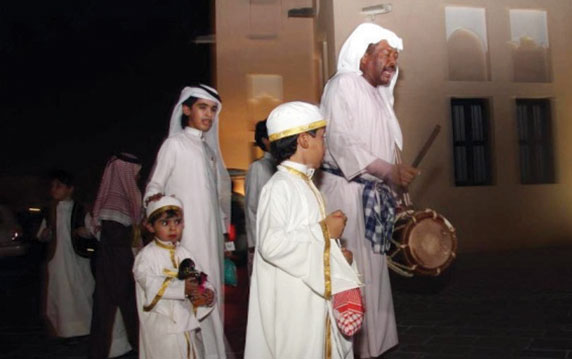Ramadan in Oman; From the holding of “Tomina” to the consumption of “Masanaf” and “Khabisa”
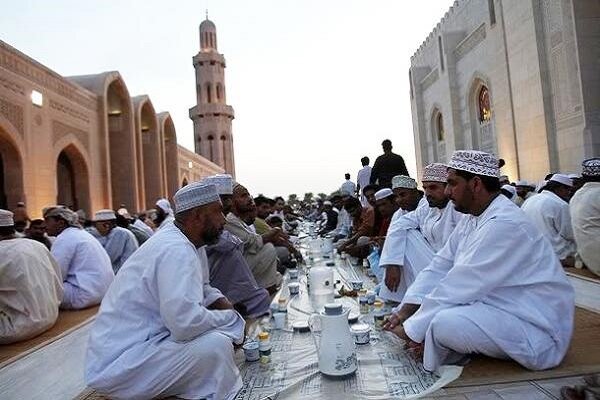
| The month of Ramadan in all Arab and Islamic countries is associated with a special color and smell, which takes different forms in these countries depending on the customs of different cultures. |
Mehr News, International Group: With the arrival of the holy month of Ramadan, once again the customs of Muslim countries to welcome this holy month and the various ceremonies performed by the fasting people in this month It is noted; Meanwhile, various foods and sweets have a special place on the tables of fasting families. Oman is one of the countries that has special customs in this holy month.
Holding collective iftar in Oman
The holy month of Ramadan in Oman by buying supplies related to this month, breaking the fast in mosques, performing taraweeh prayers, reciting the Quran and holding ceremonies called “Qarnakshuh” ” and “Habatat” bazaars.
As the month of Ramadan approaches, Omani citizens are waiting to hear the news of the beginning of this holy month in their homes or public places or the media. The Ministry of Endowments and Religious Affairs of this country is responsible for the establishment.
With the announcement of the sighting of the crescent moon of the holy month of Ramadan, people gather in mosques to offer Isha and Taraweeh prayers and congratulate each other after the end of these prayers. They also visit their relatives and relatives 2-3 days before the beginning of the holy month of Ramadan and pay their respects.
One of the most important customs of Omani citizens in the holy month of Ramadan is to hold mass iftars in mosques and the presence of family members in the big family house, so that both young and old They appear at the iftar table.
Delicious foods on the colorful tables of Ramadan
Most Omanis break their fast with water and dates or yogurt along with other foods prepared at home. In any case, along with all these foods, water and dates are essential for Omanis and this issue goes back to the relationship between them and the palm tree.
Among the other foods that Omani fasting people put on their tables during the holy month of Ramadan, they can include Khabisah or Omani halvah and Musanaf, which is a special bread with meat or fish. is pointed out.
Another ceremony of the Omani fasting people is called “Qatal Al-Hansh”, which literally means killing the snake, but it has nothing to do with this issue. Omanis hold an annual food ceremony at the end of the month of Sha’ban until the first dawn of the holy month of Ramadan. In this ceremony, families and friends gather together and eat fatty and delicious meals. Those who participate in this ceremony eat as much as they can and usually this ceremony is held during dinner.
Before the start of the holy month of Ramadan, Omani people go to the markets to buy the necessary food for consumption in this month and prepare food such as soup. Sambosa dough, Halim and other special foods are prepared before the beginning of this month. Many people prefer to eat fish directly after breaking the fast and on a daily basis.
One of the customs of Omanis in the holy month of Ramadan is to break the fast to the neighbors and ask them to break the fast. The people of this country are trying to protect this special custom because it shows the existence of peaceful coexistence and friendship among them.
Special attention to the circles of reading the Quran and memorizing the Holy Book
During the holy month of Ramadan, Omani fasting people participate in Quran reading circles and lectures in mosques, especially after morning and evening prayers. In the middle of the holy month of Ramadan, some cities in Oman have an official ceremony, according to which children in residential areas hold a festival called Qarangshweh. This ceremony is held in a number of Arab countries of the Persian Gulf under different names; For example, this ceremony is held in Saudi Arabia under the name of Qurigaan.
In this month, Omani families entrust their children to the hands of Omani teachers to memorize the Quran, and before the end of the holy month, in a ceremony called “Tomina”, these Quran memorizers It is appreciated. Special hymns are sung in this ceremony.
In this ceremony, children collect sweets, nuts and money they have received from their families and neighbors. Muscat Municipality also organizes this evening ceremony in public parks to make children happy and revive this old tradition. In this ceremony, children sing special songs and prayers, and adults encourage them by giving gifts.
In the last days of Ramadan, bazaars named Habatat are held until a certain date, and the residents of each neighborhood and city know when these bazaars are held. The stalls of these bazaars sell the necessary supplies for celebrating Eid al-Fitr, which is widely welcomed by Omani citizens every year.
Some of these bazaars start working on the 23rd day of Ramadan and continue until the end of this holy month. At the end of the holy month, special committees are responsible for the sighting of the crescent of the month of Shawwal, and by announcing the sighting of the crescent of this month, Omani citizens congratulate each other. Of course, some of them go to welcome the month of Shawwal three days before.
Omani fasting people also buy food packages to distribute among people before the start of Eid al-Fitr prayers. On the days of Eid al-Fitr, most of Oman’s cities witness the sacrifice ceremony before the Eid prayer, and the people of this country eat the famous al-Arsiya food at noon of Eid al-Fitr. This dish includes rice with special oil of Oman and local meat.
Omani citizens wear their traditional clothes called Dashasha to attend mosques for Eid prayers and listen to sermons, and carry Omani daggers and canes with They take it themselves.


